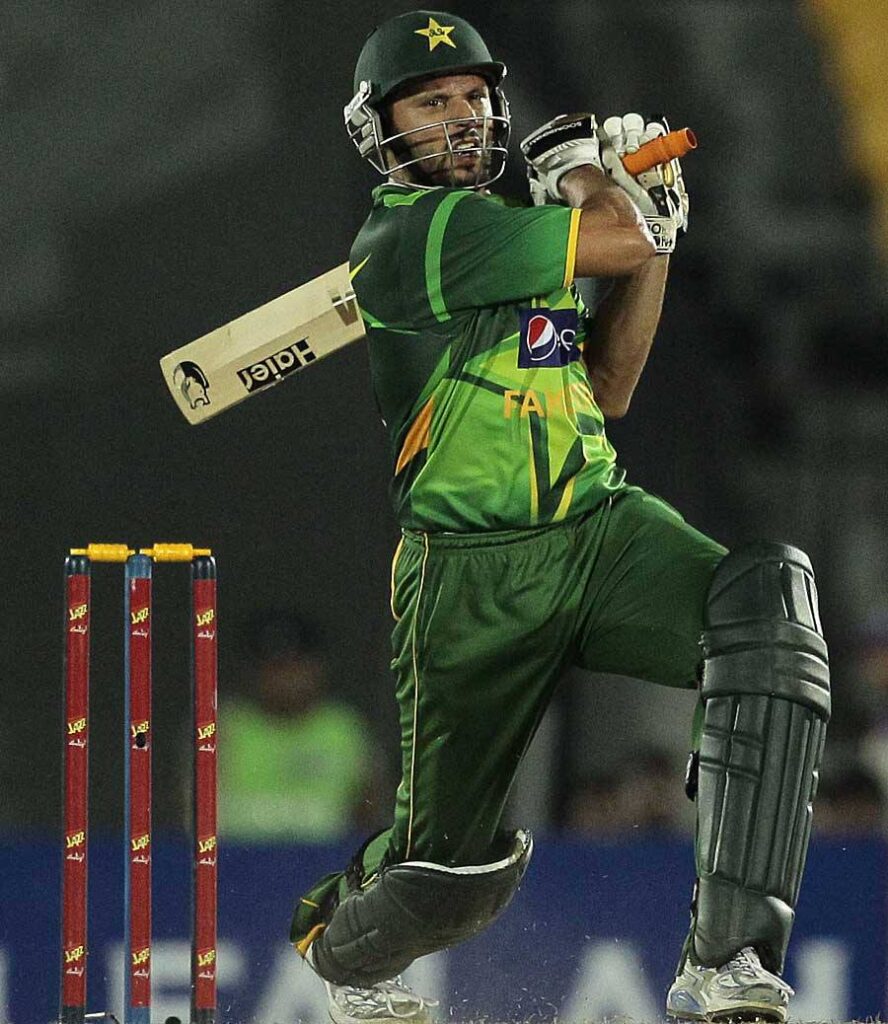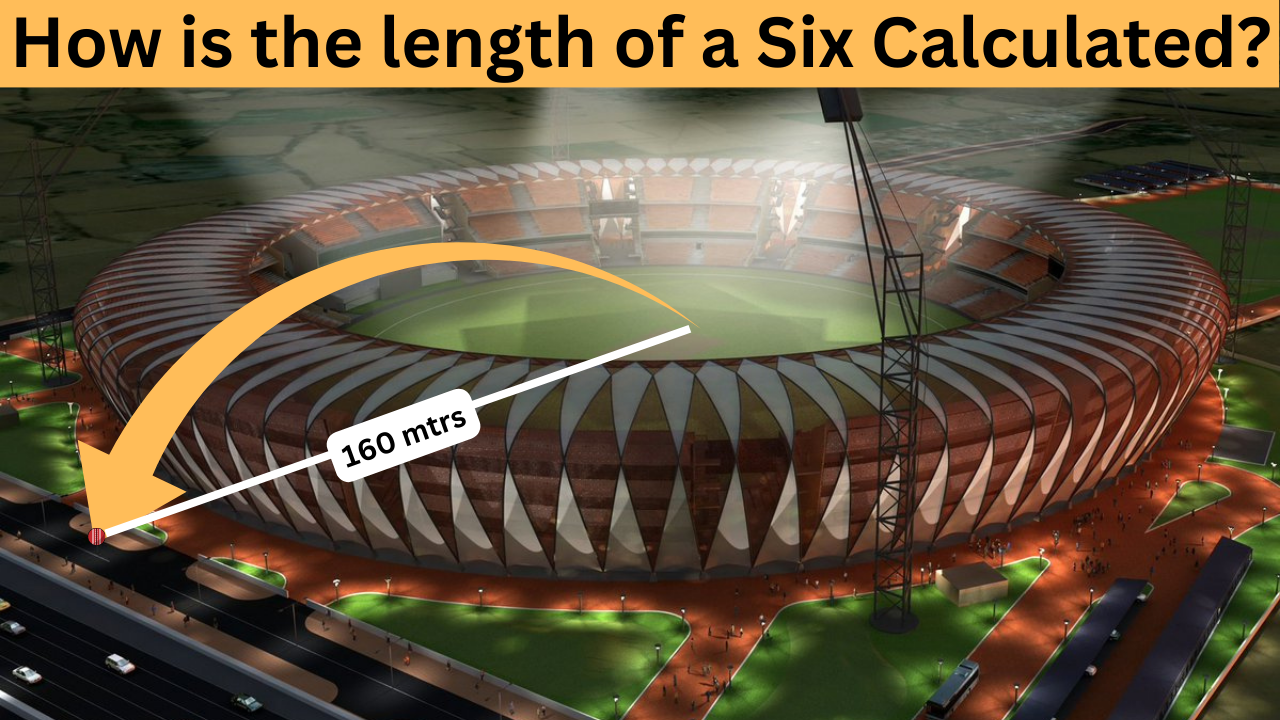We always saw in a cricket match that when a player hits a six, the length of a six is calculated and shown on the tv or screen. have you ever thought that that six distance is how can be calculated?
If you are interested to know about the length of a six calculation we are come up with a great article for you, where you know about the whole technologies and logic behind the length of a six calculation.
The entire stadium is measured from both wicket ends at an inch-to-inch distance. Therefore, when a batsman strikes a ball for a six, the spider cam tracks its trajectory all the way to the exact position where it hits the ground. This trajectory’s distance from the ground is calculated and shown.
Six Hitting Distances
Using Hawkeye and RADAR gun. Hawkeye traces the path of the ball after it hits the bat. RADAR gun measures the velocity of the ball after the impact.
In a cricket match, when a player hit a six then the ball moves in a projectile motion. The path on which the ball choose is fixed with respect to the speed and direction and the angle of the ball hitting. So we calculate the length of six on the base of the angle of hitting. By using the projectile formula
according to newton’s laws of motion, R=v² Sin (2θ)/g
If the ball lands on the stadium roof then the length of a six is also accurately calculated. when the ball is in the air or lands out of the boundary then the total length and speed are calculated by the Hawkeye technology that you heard about.
How is the length of a Six in cricket calculated, and what is the accuracy?
Hawkeye performs in every game where the technology is used. Six cameras that are perfectly positioned all over the stadium are used to track the ball’s movement as it goes off the batsman’s bat.
Hawk-Eye technology, part of the Umpire Decision Review System, is a complex computer system used to visually track the trajectory of the cricket ball. The technology uses several cameras placed around the ground to create a 3-D image that shows how the ball will travel after it has hit the batsman and help to calculate the final distance.
We saw in the cricket matches that the technology used in the game is most of the time correct but we also saw the dark side of the technology. We saw that most of the umpires give the wrong decision due to technical faults. so I could say that the technology used in every game is 99.99% correct.
But the hawkeye technology used in cricket for calculating the length of a six is 100% accurate. When the ball is in the air, In terms of the Range of Projectile Calculations the length is also calculated. The Hawkeye technology calculates speed, but changes in speed can vary for a number of reasons. The technology is clearly a lot better than it would have been in the past, and the error margins are low.
Who hits the biggest six in cricket?

The longest six in cricket recorded is that of Pakistan’s Shahid Afridi in 2013. Shahid Afridi did register a six that traveled 153 meters in Johannesburg. McLaren bowled a length ball in the 35th over of the run chase, and Shahid Afridi hit it out of the stadium ruthlessly, making it the biggest six ever.
FAQs
How is Hawk-Eye technology used in cricket?
Hawkeye was invented in 2001 to explicate the trajectory of the ball once delivered from the bowler’s hand. This technology is the most extensively used technology by broadcasters to provide another perspective view for the Leg Before Wicket (LBW) appeals to the commentators and viewers.
What technology does Hawk-Eye use?
Hawk-Eye uses six or more computer-linked television cameras situated around the court. The computer processes the video in real time and tracks the path of the tennis ball on each camera. These six separate views are then combined to produce an accurate 3D representation of the path of the ball.
Who invented Hawk-Eye technology?
Hawk Eye is the brainchild of keen sportsman – ” I’m a county cricketer” – Dr. Paul Hawkins (it’s also named after him). After earning his Ph.D. in artificial intelligence, in 1999 Hawkins went to work for technology company Roke Manor Research. You can read extra details about Hawkeye technology on Wikipedia.

